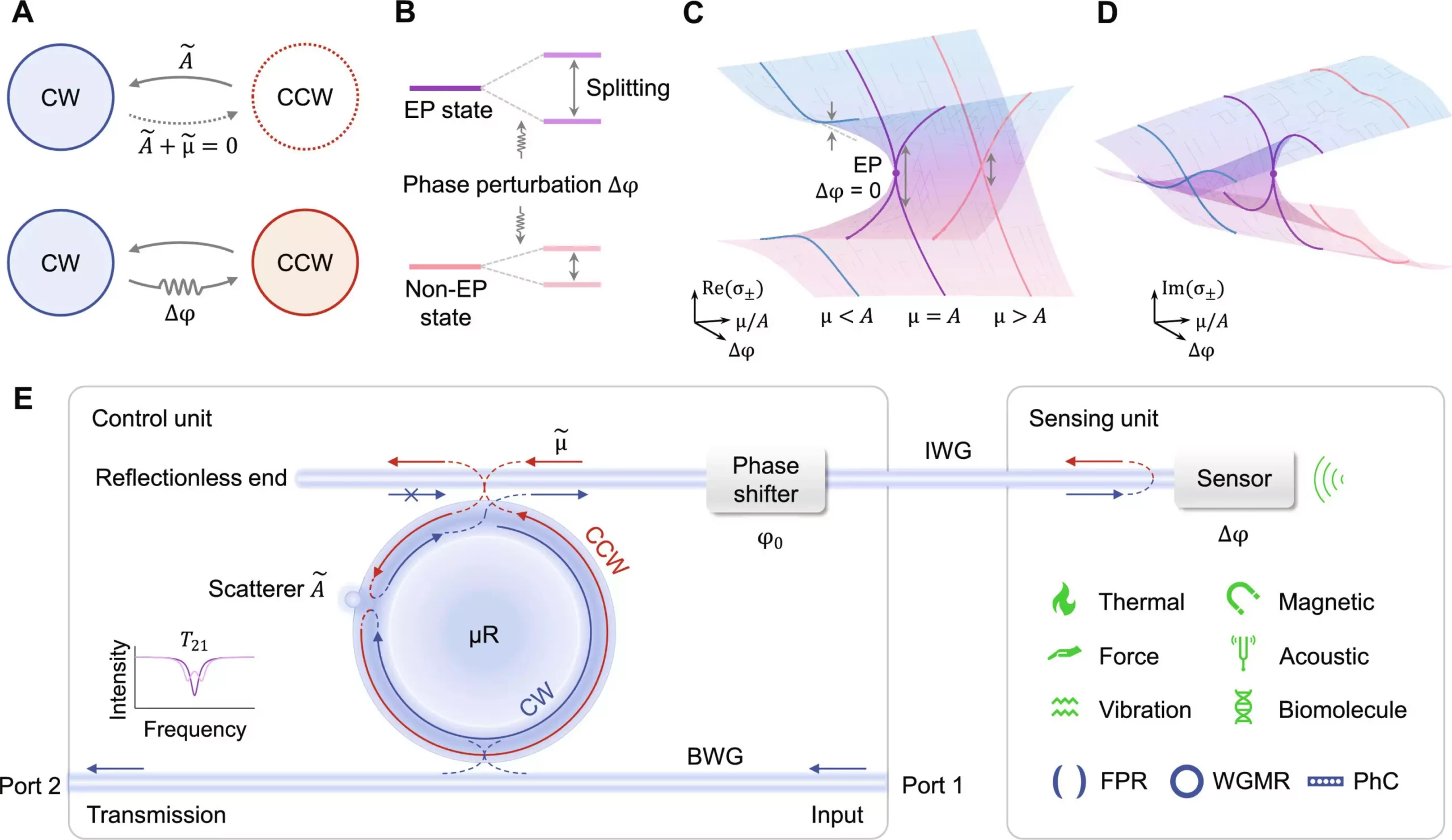Optical sensors play a crucial role in various scientific and technological fields, detecting everything from gravitational waves to biological tissues. One of the key challenges in optical sensing has been increasing sensitivity to detect faint signals amidst noise. However, recent research from Lan Yang and Wenbo Mao at Washington University in St. Louis has shed new light on how exceptional points (EPs) can be leveraged for advanced optical sensing.
The study, published in Science Advances, reveals that EPs – unique conditions in systems where extraordinary optical phenomena occur – can be used to achieve remarkable sensitivity to environmental changes. Unlike traditional methods that require modifications to the sensor itself, Yang and Mao’s innovative approach involves an EP control unit that can be connected to external sensors. By tuning the control unit, EPs can be manipulated to enhance sensitivity without the need for complex sensor alterations.
Expanding Applicability and Universality
This new EP-enhanced sensing platform represents a significant advancement in optical sensing technology. By decoupling sensing and control functions, Yang and Mao have made it possible to apply EP enhancement to a wide range of conventional sensors, including ring resonators, thermal and magnetic sensors, as well as sensors for detecting vibrations or biomarkers. This breakthrough has the potential to vastly improve the detection limit of sensors currently in use.
Proof of Concept
To demonstrate the effectiveness of their EP-enhanced configuration, Yang’s team conducted tests to compare the detection limit of a sensor with and without EP enhancement. The results were impressive, showing a six-fold reduction in the detection limit of the sensor using the EP-enhanced system. This improved ability to detect weak signals has far-reaching implications, particularly in the field of medicine.
Mao is particularly focused on exploring medical applications for EP-enhanced sensing, with a specific interest in enhancing magnetic sensing for MRI technology. By improving the sensitivity of MRI machines, which currently require controlled temperature rooms, EP technology could revolutionize medical diagnostics and imaging. The ability to detect subtle perturbations with greater accuracy could lead to earlier detection of diseases and more targeted treatments.
The research conducted by Yang and Mao represents a groundbreaking achievement in the field of optical sensing. By harnessing the power of exceptional points, they have unlocked a new level of sensitivity and detection capability that could have far-reaching implications across various industries. The future of optical sensing looks brighter than ever, thanks to the innovative work of these pioneering researchers.



Leave a Reply